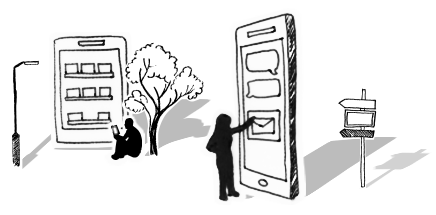




The Emergence of Immersive Learning
Upon hearing ‘immersive simulation’ you might think about unflattering virtual reality helmets, Sim City or any other gamer role play, but immersive learning is becoming a ‘game changer’ in corporate learning.
Immersive simulation is effective in embedding learning as it allows the learner to act in a real life situation with guidance and without all the consequences.
Employees can practice the newly acquired skills as many times as they’d like until they feel comfortable applying it in a real life situation.
We inherently learn by doing rather than sitting in front of 10 minutes of eLearning and being expected to transfer knowledge into skills so this is the closest you can get to the real thing without the risk.
A corporate immersive simulation typically involves different ‘real-life’ situations in which the learner needs to make decisions based on the learning they’ve received. It involves constructive feedback when they get it wrong and positive reinforcement when they get it right.
It’s great that the evidence demonstrates what a powerful tool immersive simulations can be, but you’re probably asking ‘isn’t implementing something like this expensive’? Investing the money upfront will allow you to reap the benefits long term. Not only does immersive simulation provide a safe environment for employees to learn from their mistakes, but those mistakes are not actually occurring in reality therefore not negatively impacting the bottom line.
As previously mentioned, the rate at which learning is embedded is also higher than traditional methods and thus you’re getting more bang for your buck.
Things to consider when setting up an immersive simulation in your organisation:
- Make it future proof: If your company is investing a large amount of money, you want to make sure it will have a long shelf life in order to allow employees to reap the benefits for as long as possible, or at least until technology vastly evolves yet again (which is inevitable). When we worked with a client to ensure employees were ready to adopt new systems and working practices of a new company taking over, we used a designated learning space with sandboxes of the systems people would be using with experts from different fields trying out common tasks with people. It was also an occasion where leadership had a voice and additional communications reinforced behaviours to further reassure and prepare people. The tools, templates and supporting technology were reusable.
- Involve your SMEs from the very beginning: The earlier you involve the experts, the less content reviews you will need to endure. This means a quicker and more accurate delivery of the simulation to the business which, 9 times out of 10, is needed as soon as possible.
- Get people excited about it!: This is an exciting new tool that employees actually get to play with, so use that to your advantage. It can often be difficult to engage learners, especially with corporate material but the fact that this is gamification at its finest means there’s much to leverage here to gain user buy-in.
Immersive simulations are an up and coming tool in corporate learning and pack a huge punch when it comes to embedding learning. When looking to be innovative and cutting edge, using this tool in your organisation is definitely something to consider.
To get the latest change tips, advice and guidance directly to your inbox, sign up to our monthly Business Change Digest.
